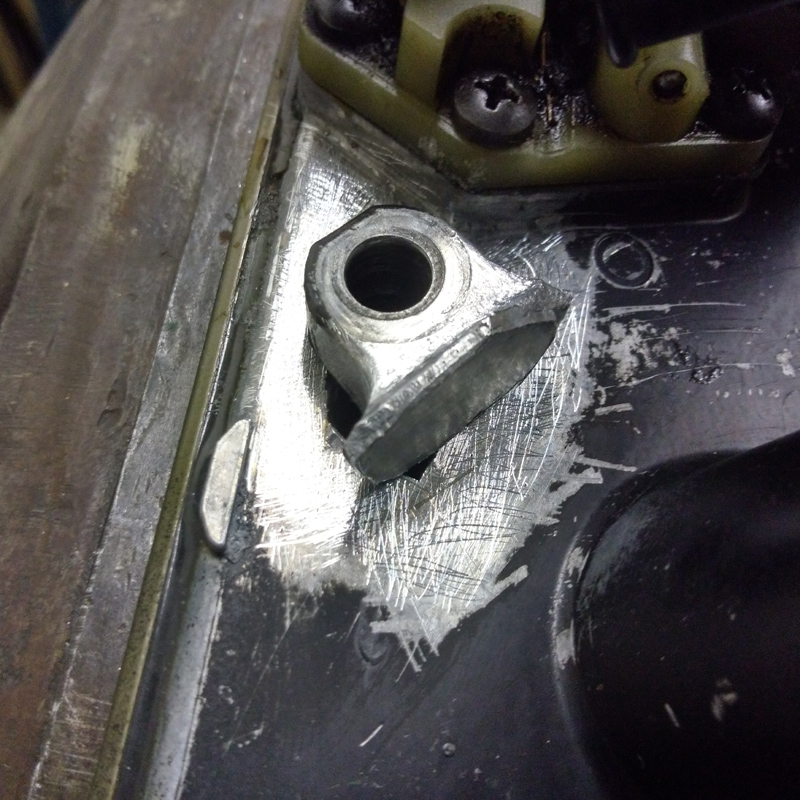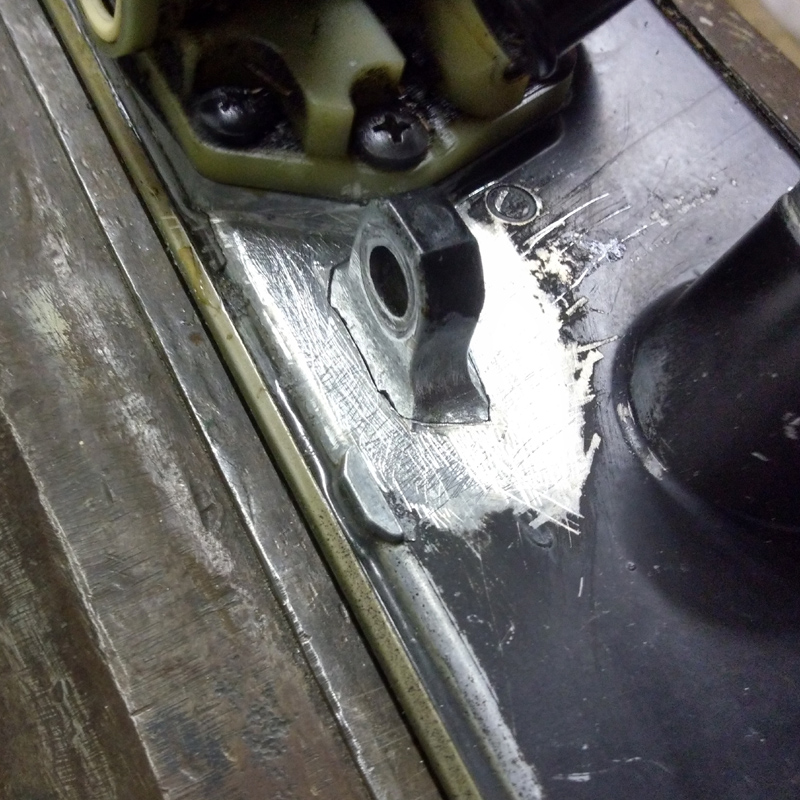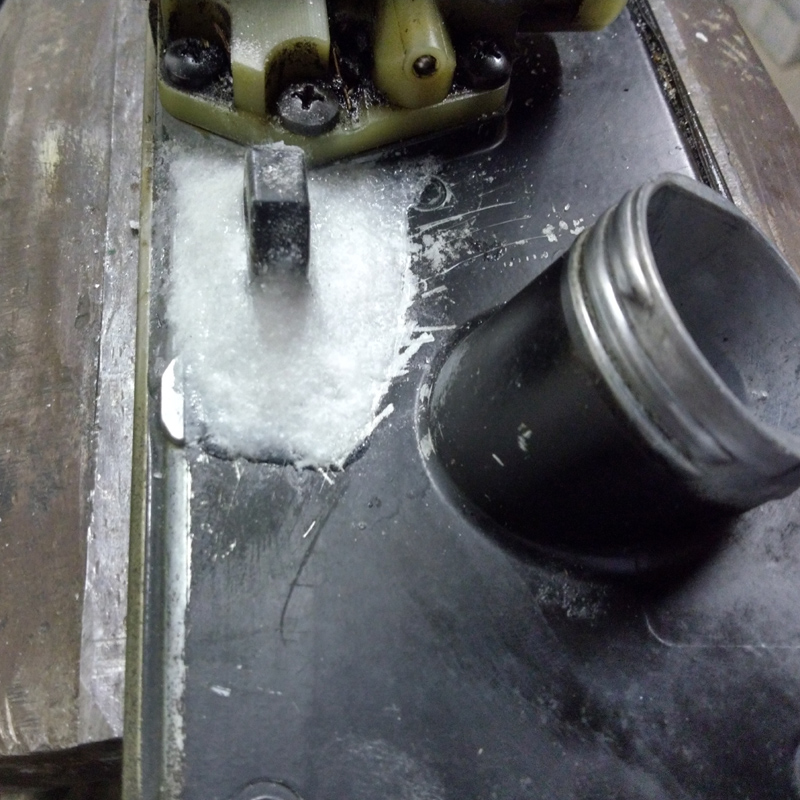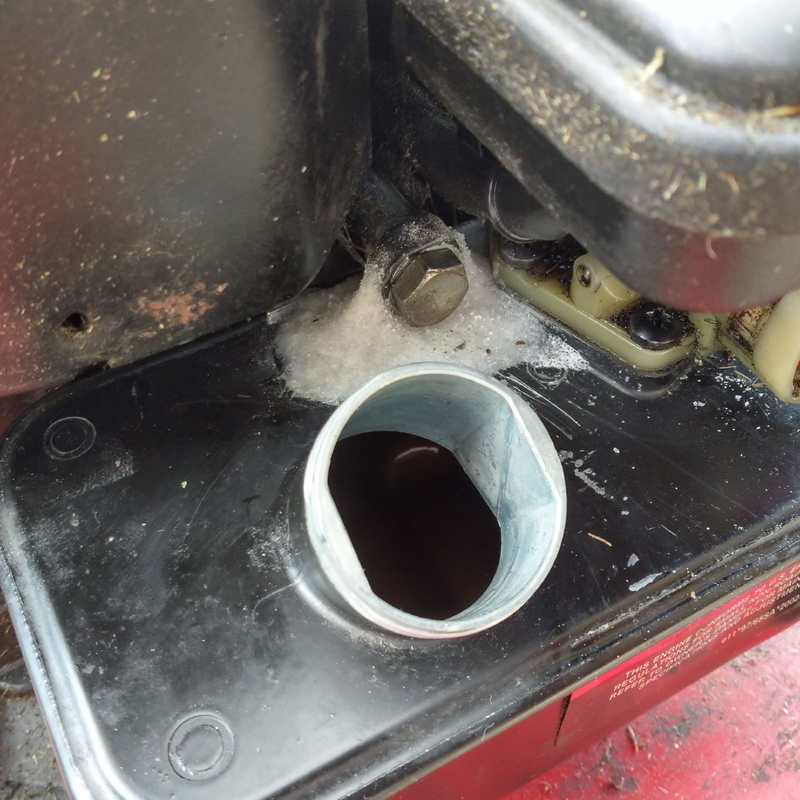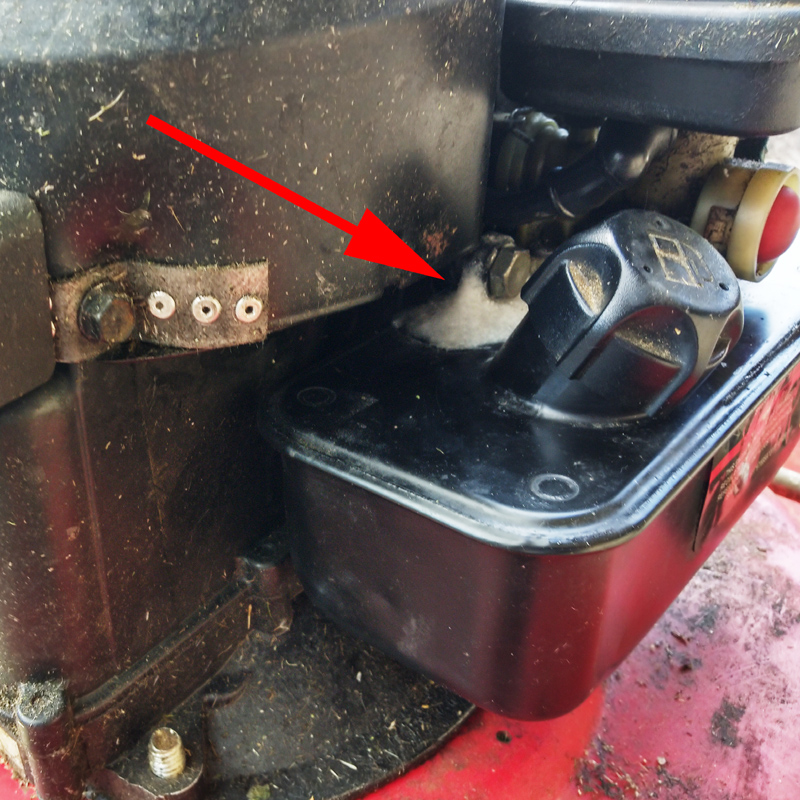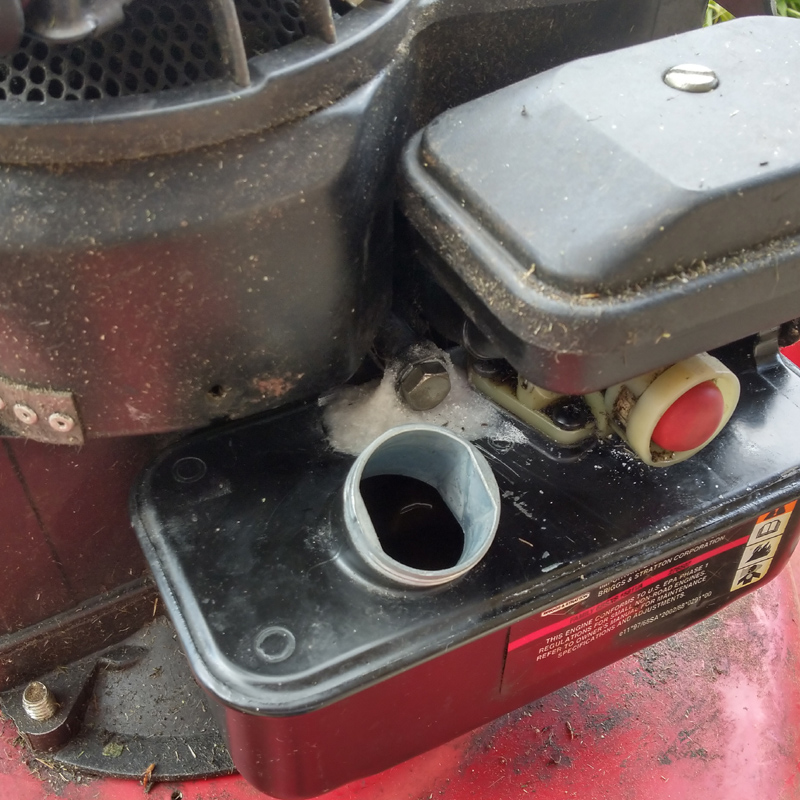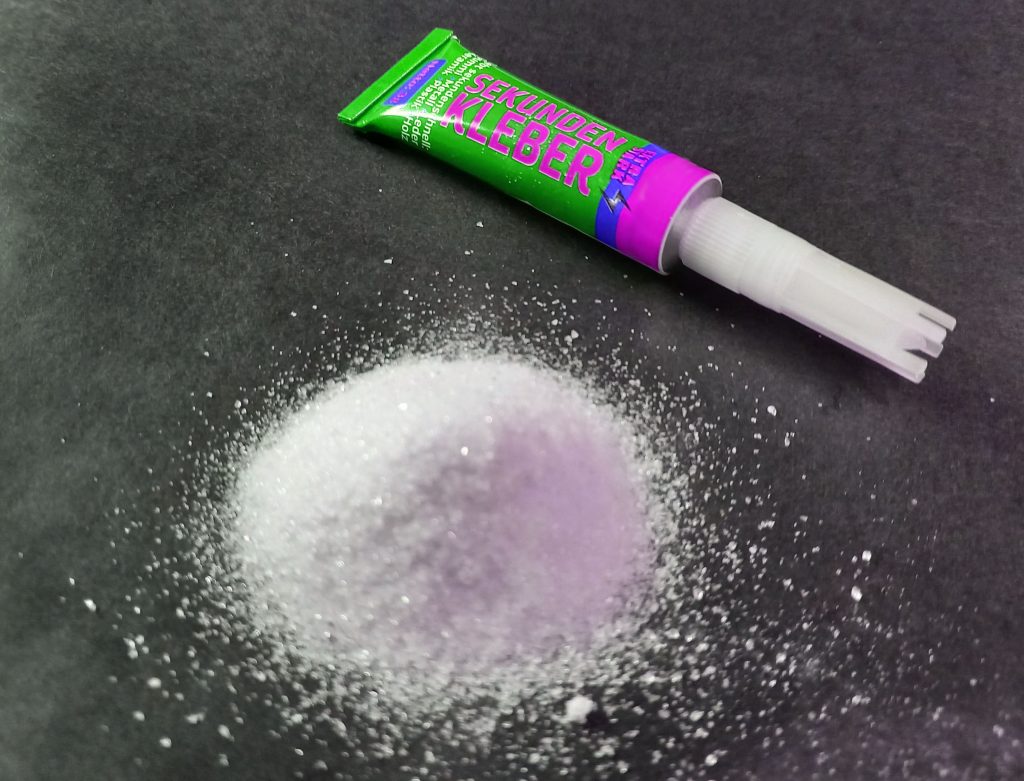Howto Repair Parts Using Glass Sand and Super Glue
This is how to repair broken parts so they become stable and durable. The best is to watch the video:
Supplies
Glass sand with a particle size of 0.05 to 0.5 mm.
You may make your own glass sand from a bottle using a mortar, but it is easier to buy glass sand that is used for sand blasting. Keep in mind, that normal sand does not work well, because glass is alkaline and that causes super glue to cure very fast. Normal quartz sand does not support curing.
Additional considerations
- Low viscous (thin) cyan acrylate glue is much better for this technic than gel like glue, because the glue will be “sucked” automatically into the gaps in between the glass sand particles.
- The use of activator is recommeded, to increase the curing speed.
- The key thing is to add additional layers of glass/glue to strengthen the broken material. This way, broken parts are often more strong after the repair than before.
- As always with glueing areas they must be free of dust, grease and dirt, so it is important to clean them carefully. Eventually use some solvent like water with dishwashing detergent, acetone or Isopropanol.
- A rough glueing are is much better than a smooth surface, becaue the adhesion area is much larger there.
- make sure to fully fill the glass sand particle gaps with glue. If there are still gaps, the result is less storng.
How I figured out, that this technic works quite well:
A few years ago I purchased some porcelain in an online auction. But because the pieces were poorly packed, I glued the shards together using cyan acrylate glue. That worked quite well, but some of the shards were so small, that I could not place them at the right spot. In other words the result had some holes. So I looked for some filler material and I was thinking of glass because it is also partially transparent like porcellain. Because of that I broke a bottle and milled it in a mortar, till I had some glass sand of different particle sizes. After sieving off big particles I was using the sand in conjunction with cyan acrylate glue. It was surprising to me, how quick the glue cured when it came in contact with glass sand. Means the glass sand worked very well to fill porcelain defects nicely. About three years ago, I had to mow the lawn in our garden and in the middle of my work, the gasoline tank broke off due to vibration from the motor. Because I was a bit under pressure to finish, I had no better idea than quickly fix the tank using the technic I learned from porcelain repairs. It was clear to me, to just put glue onto the broken are would not work, because of the vibration against the small glueing area. So I added some layers of glass/glue to strengthen the parts. Actually I didn’t expect that it lasts for a long time, but I was surprised, that afer finishing my mowing work, the Tank was still nicely fixed. Believe it or not, the temporary repair held for about three years with plenty of operations. After a while I realized, that this technic is very successful for further repairs, so I decided to share my findings.
A few days ago, the tank broke off again in the middle of my work, because the mower knife hit against a big stone that caused the motor to stop in a shock manner. Again I repaired the tank the same way, but this time I took the opportunity to make some photos. You see them further down:

